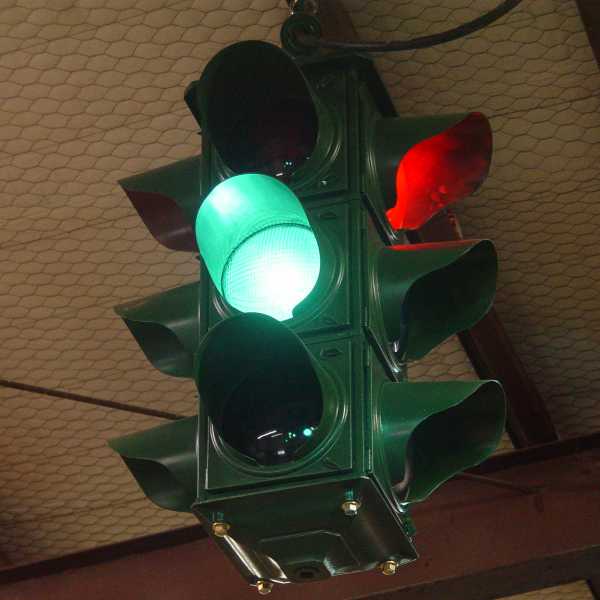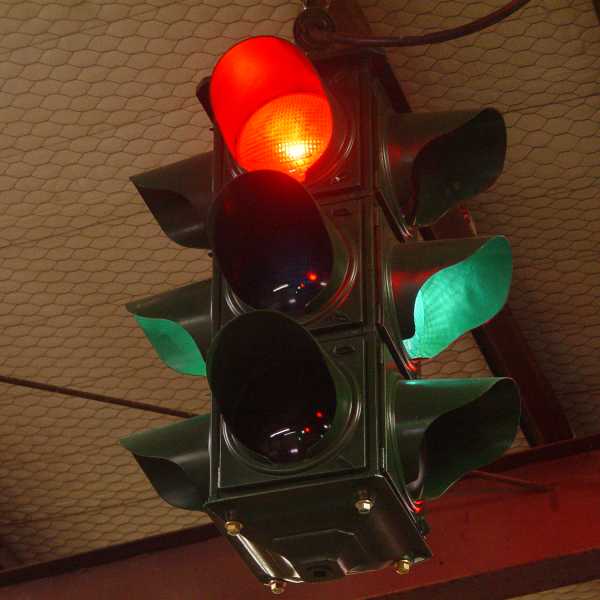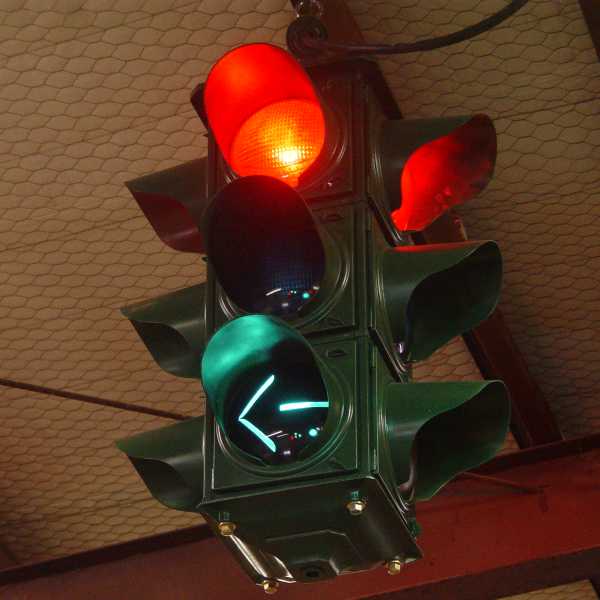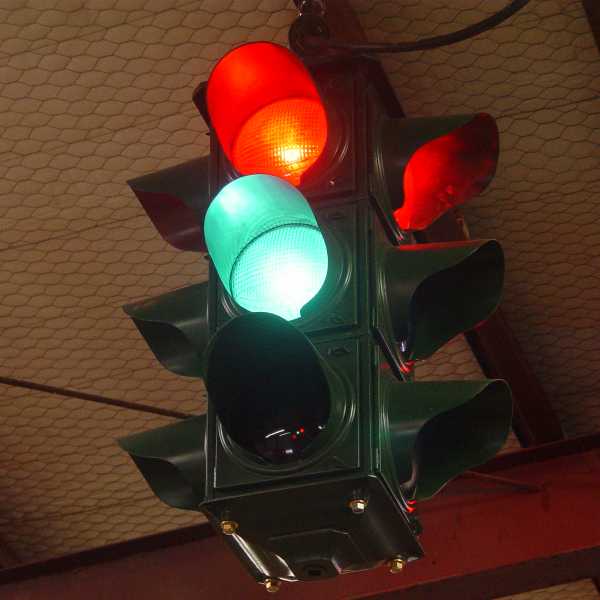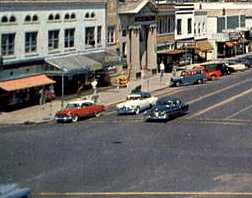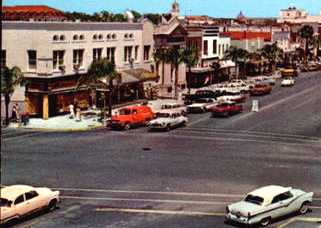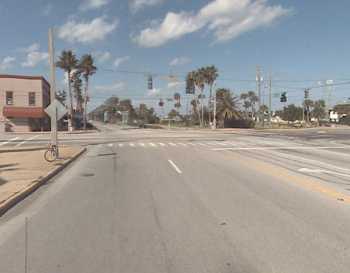Indications facing the arterial street.
Stop indication.
|
Protected left turn.
|
Regular green indication.
|
Changing back to red.
|
Indications facing the cross street.
|
The indications facing the cross street were slightly different. The third section was used to try to control pedestrian movement. A WALK indication would display for a few seconds when it was safe for pedestrians to step off the curb to cross the larger street. When WALK went dark, pedestrians in the crosswalk could finish crossing but additional pedestrians weren't supposed to step off the curb. In reality, many pedestrians grew to ignore the darkened WALK indication and continued to cross on the green light, so the single WALK indications were phased out in favor of WAIT - WALK pedestrian signals.
Years ago Sesame Street produced an animation of a New York STOP-GO-WALK signal so that young children would understand what the WALK indication meant. (See Sesame Street - Cars Walking.) See the signal operate on YouTube. |
Green with WALK indication.
|
A red-green signal in New England with the WALK indication in the center, 1940s.
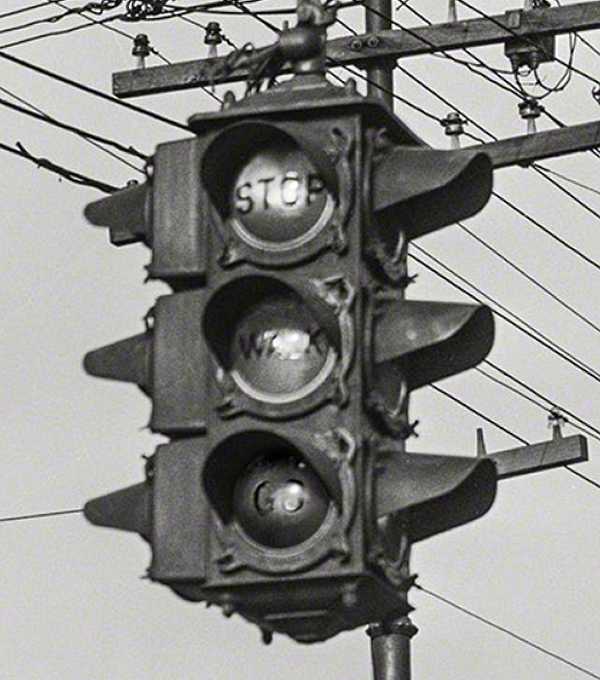
The evolution of an intersection - S. Beach & Orange Streets, Daytona Beach, FL.
Original 2-color signal.
|
3rd section added for turns and peds.
|
